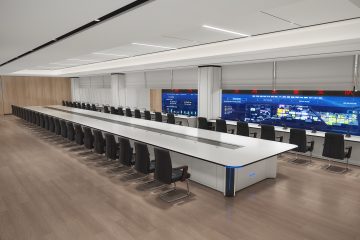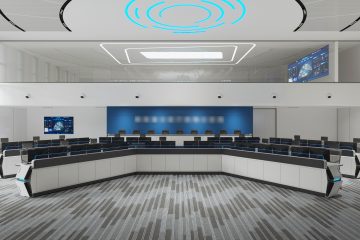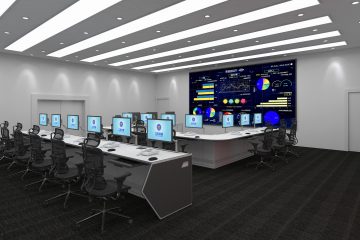Click me to visit our new website
Introduction to Control Center Desk
A control center table is the backbone of any command center, providing the essential interface between operators and the systems they manage. Ensuring that this desk is both efficient and functional is crucial for the seamless operation of a command center. This article explores the importance of a well-designed control center desk and outlines the best practices for setting up an optimal workspace.
Importance of an Efficient Control Center Desk
An efficient control center desk is essential for maximizing productivity and ensuring smooth operations. It allows operators to access and manage critical information quickly, reducing response times and enhancing decision-making processes. A well-organized desk minimizes clutter, preventing distractions and enabling operators to focus on their tasks. Additionally, an efficient setup can contribute to the overall safety and effectiveness of the command center by reducing the risk of errors and ensuring that all necessary tools and information are readily accessible.
Key Elements of a Functional Control Center Desk
Ergonomic Design for Operator Comfort
Operator comfort is paramount in a control center environment where long hours of work are the norm. An ergonomic design ensures that operators can maintain a comfortable posture, reducing the risk of strain and fatigue. Key aspects of an ergonomic control center desk include adjustable monitor mounts, height-adjustable desks, and supportive seating. These features allow operators to customize their workspace to their individual needs, promoting better posture and reducing the likelihood of repetitive strain injuries.
Integrated Cable Management and Connectivity Solutions
A cluttered workspace can hinder efficiency and pose safety risks. Integrated cable management solutions help maintain a tidy and organized desk, preventing cables from becoming tangled or damaged. Effective cable management not only enhances the aesthetic appeal of the control center but also improves accessibility to devices and reduces the risk of accidental disconnections. Connectivity solutions, such as easily accessible ports and wireless charging stations, further streamline the workspace by minimizing the need for excess cables and facilitating quick connections to essential equipment.
Best Practices for Control Center Desk Setup
Setting up a control center desk involves more than just arranging monitors and keyboards. Here are some best practices to ensure an efficient and functional setup:
- Prioritize Ergonomics: Ensure that desks, chairs, and monitor mounts are adjustable to accommodate operators of different heights and preferences. Position monitors at eye level to reduce neck strain and use chairs with proper lumbar support.
- Optimize Layout: Arrange equipment and tools in a logical, intuitive manner to minimize movement and reach. Frequently used items should be within arm’s reach, while less frequently used items can be placed further away.
- Ensure Proper Lighting: Adequate lighting is crucial for reducing eye strain and maintaining focus. Use a combination of ambient and task lighting to create a well-lit workspace. Avoid glare on screens by positioning lighting sources appropriately.
- Implement Efficient Cable Management: Use cable trays, clips, and ties to organize and conceal cables. Label cables to identify them easily and prevent confusion during maintenance or upgrades.
- Incorporate Redundancy: In critical command centers, having redundant systems and backups can prevent downtime. Ensure that your desk setup allows for quick switching between primary and backup systems.
- Maintain Cleanliness: Regularly clean and sanitize the workspace to create a hygienic environment. Encourage operators to keep their desks tidy by providing storage solutions such as drawers and shelves.
Choosing the Right Control Center Desk for Your Command Center
Selecting the right control center desk involves considering several factors to ensure it meets the specific needs of your command center:
- Assess Your Requirements: Identify the primary functions and tasks performed at the control center desk. Consider the number of operators, the type of equipment used, and the space available.
- Evaluate Design Options: Choose a desk design that aligns with your ergonomic and functional requirements. Look for features such as adjustable heights, modular components, and integrated cable management.
- Consider Durability and Quality: Invest in high-quality desks that can withstand the demands of a busy command center. Look for materials and construction that offer durability and longevity.
- Plan for Future Growth: Select a desk that can accommodate future changes and expansions in your command center. Modular and adaptable designs can provide the flexibility needed to adjust to evolving needs.
- Seek Expert Advice: Consult with professionals or companies specializing in control center furniture to get recommendations tailored to your specific needs. They can provide insights into the latest trends and technologies that can enhance your control center desk setup.
By focusing on these key elements and best practices, you can create an efficient and functional control center desk that enhances productivity, comfort, and overall effectiveness in your command center.



0 Comments